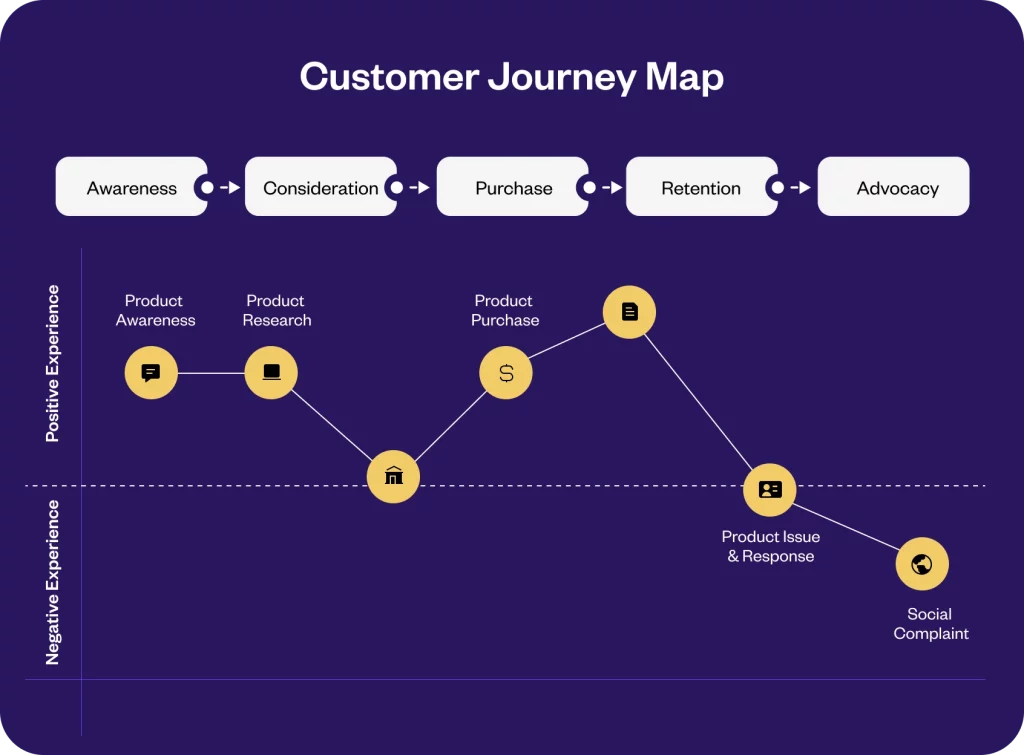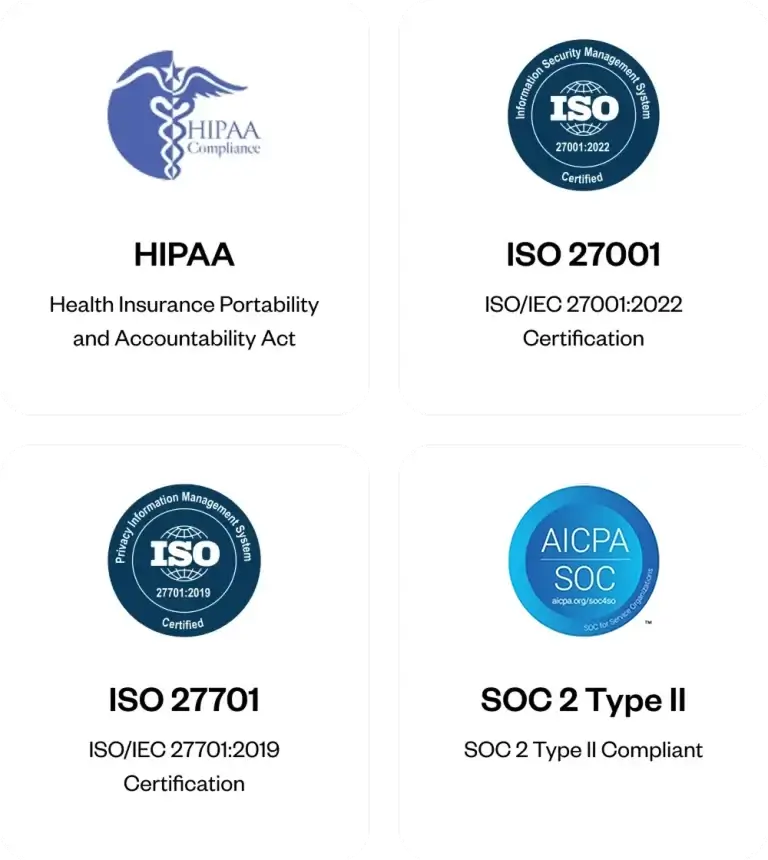Conversational marketing is shaking the foundations of customer engagement today! Top global brands like Coca-Cola, Shopify, and Amazon aren’t merely flirting with this technology—they’re diving in headfirst, transforming the way they engage with customers. By integrating advanced chatbots, these companies are redefining what it means to interact with customers, moving beyond mere information delivery to offering interactive, highly personalized experiences.
But don’t just take our word for it—let’s talk numbers. Chatbots are set to help businesses save a whopping $8 billion annually by 2023. What’s more, 64% of internet users say 24-hour service is the best feature of chatbots, according to a recent survey. If you’re still hesitating to join this conversational revolution, consider this your wake-up call.
In this blog, I’ll walk you through how to maximize your ROI with conversational marketing chatbots, ensuring you stay ahead of the curve in today’s rapidly evolving landscape.
What is conversational marketing and where does it fit in your marketing strategy?
Conversational marketing, essentially, is the practice of using real-time, one-to-one conversations with customers to drive engagement, foster relationships, and facilitate sales. Unlike traditional marketing methods that broadcast a message to a broad audience, conversational marketing is personalized, leveraging intelligent chatbots and human intervention to provide tailored responses.
In the complex ecosystem of digital marketing, conversational marketing stands out as a game-changer, especially when amplified by chatbot technology. Conversational marketing isn’t just another channel; it’s an overarching strategy that places customer interaction at the forefront. Here’s the kicker: chatbots make these interactions scalable. Imagine having an army of top-tier salespeople available 24/7, capable of engaging customers in real-time, guiding them down the sales funnel, and even upselling or cross-selling with personalized recommendations.
The impact of integrating chatbots into your conversational marketing strategy goes far beyond merely enhancing customer service.
We’re talking about gathering invaluable data on customer behavior and preferences, automating repetitive tasks so your team can focus on high-impact initiatives, and providing an always-on channel for customer engagement. These capabilities are not just nice-to-haves; they’re now expectations from a modern, informed consumer base.
This makes chatbots not just an addition but a necessary element that plugs directly into your overarching marketing strategy, enhancing reach, personalization, and data analysis.
As someone who has spent years in the marketing trenches, I can affirm that the organizations that adopt this robust, interactive, and data-driven approach will not only meet but exceed their ROI expectations.
Leading global brands from various sectors—be it retail, tech, or healthcare—are already leveraging this technology to stupendous effect. In fact, according to Gartner, by 2025, 80% of customer interactions will be handled by AI. So, the question isn’t whether you should adopt chatbots for conversational marketing; it’s how quickly you can implement them to stay ahead of the curve.

Use cases of conversational marketing using AI chatbots?
If you’re a marketer in 2023, you’re probably always on the lookout for something that’s going to give you an edge. In this regard, the versatility of AI-powered chatbots in the realm of conversational marketing cannot be overstated.
Let’s dig into some of the specific ways these bots are changing the game for both businesses and consumers.
1. Customer support and service
These aren’t your grandpa’s automated responders. Available 24/7, these bots handle everything from basic FAQs to complex troubleshooting.
They can even help customers navigate through your services, and they’re always up-to-date with your latest offerings.
2. Personalized shopping experience
Imagine giving your customers a virtual personal shopper who understands their style down to the last detail.
AI chatbots analyze past behavior and preferences to curate a list of products that your customer is likely to fall in love with. It’s not just upselling; it’s smart selling.
3. Personalized product recommendations
Speaking of smart selling, the product recommendations these bots give aren’t plucked out of thin air. They’re data-driven, analyzed, and highly personalized. Your customer feels understood, and you get to enjoy increased sales. It’s a win-win.
4. Lead qualification and nurturing
If you’re looking to separate the wheat from the chaff in terms of prospects, chatbots can qualify leads based on predetermined criteria. They can also nurture these leads by providing timely and relevant information until they are sales-ready.
5. Order Tracking
Want to keep your customers in the loop without fielding a million “where’s my order?” queries? Chatbots can provide real-time updates on order status, delivery timings, and even handle returns.
6. Event coordination
Got a webinar or product launch coming up? Let the chatbot handle the logistics. They can send out invites, keep track of RSVPs, and even field questions about the event, these bots can take a load off your plate.
7. Employee onboarding
On the internal side of things, chatbots can dramatically simplify the employee onboarding process. Instead of a human resources team spending countless hours explaining procedures, the chatbot can guide new hires through the basics, giving your team the time to handle more complex issues.
8. Customer feedback collection
Feedback is the breakfast of champions, and chatbots can serve it up hot. Whether it’s soliciting reviews or running quick surveys, these bots can help you get the valuable customer insights you need.
9. Multi-channel support
Here’s the kicker—these bots can seamlessly integrate with various channels like social media, email, and SMS. Your brand tone and messaging remains consistent, and your customers get to choose their preferred interaction platform.
Must read: 10 Top conversational AI platforms in 2024
Examples of conversational marketing
It’s one thing to hear about all the amazing things AI chatbots can do, and another to see them in action. So, let’s put the theories aside for a sec and dive into some real-world examples that prove why conversational marketing is the bee’s knees.
Domino’s Pizza bot
Love pizza but hate picking up the phone? Domino’s bot lets you place an order right through the chat, track your pizza in real-time, and even remembers your last order. Simple, efficient, and delicious—just like their pizza.
But the benefits aren’t one-sided. For Domino’s, the bot serves as a powerful sales engine, driving revenue not just through higher volume but also through strategic upselling. It provides real-time tracking updates, so you’re always in the loop about your order status, from the oven to your doorstep. This proactive engagement reduces the customer service load, leading to considerable cost reductions. So, next time you order a Domino’s pizza through their chatbot, know that you’re part of a transformative digital dining experience that is as efficient for you as it is profitable for them.
Bonus example: Papa Johns WhatsApp bot – Mr. Slice – powered by Yellow.ai
Hyundai Motor’s bot
Let’s talk about car sales for a moment. You know how overwhelming it can be to go through endless models and then deal with sales agents? Well, Hyundai Motor ditched that old playbook and teamed up with Yellow.ai to create an AI-driven, end-to-end vehicle purchasing platform that is like nothing you’ve ever seen before.
It not only handles customer queries with pinpoint accuracy but also boosts sales conversions, all while clocking in an average agent response time of just 22 seconds. Imagine that—a thousand cars sold and a million-plus customer impressions, all thanks to an AI chatbot.
In the words of Virat Khullar, Vertical Head – Marketing at Hyundai Motor India, Yellow.ai is setting “a new standard in the industry for customer experience.” Talk about driving into the future, pun intended.
Indigo Airline bot – Dottie
Indigo Airlines aimed to take customer satisfaction sky-high, and Yellow.ai was their co-pilot on this journey. Dottie transformed customer support by automating over 35 different use-cases, from ticket booking to cancellations and loyalty program management, with an astounding 90% user acceptance rate. The result? An 87% average customer satisfaction score and more than 42 million messages exchanged in just a quarter.
But that’s not all. Dottie is more than just a customer support bot. She’s also a marketing wiz, sending out push notifications about discounted offers and promotions.
Abir Lavasa, Sr. Manager, Digital at Indigo, encapsulates it best: Yellow.ai has allowed them to “design conversational AI flows within minutes,” while making customer interactions “quick and hassle-free” across digital channels.
Key benefits of conversational marketing with chatbot
If you’re eyeing substantial growth and a deeper connection with your customers, let’s get real—you can’t afford to ignore conversational marketing anymore. Why? Because conversational marketing, especially when powered by advanced AI chatbots, offers tangible, hard-to-ignore advantages.
1. Customer engagement like never before
No more one-sided conversations. A chatbot can instantly engage customers, understand their needs, and offer tailored recommendations. The result? More meaningful interactions and, ultimately, more sales. People love brands that “get them,” and this technology allows your brand to do just that.
2. Revenue? Say hello to upselling and cross-selling
You’re leaving money on the table if you’re not using conversational marketing to upsell or cross-sell. Advanced AI algorithms can identify these opportunities in real-time, suggesting personalized deals or add-ons that genuinely interest the customer. No more shooting in the dark; your sales strategies become as precise as a well-played game of chess.
3. Customer experience that’s hard to forget
Nobody likes waiting. Especially not your customers. Chatbots offer instant answers, anytime—no ifs, ands, or buts. This isn’t just about speed; it’s about being there when your customer needs you. And the more you can do that, the more they’ll want to stick around.
4. Operational efficiency meets cost savings
Streamlining your customer service doesn’t mean sacrificing quality. Your bot handles the routine queries, freeing up your human talent to tackle more complex, value-added tasks. This isn’t just about saving money; it’s about reallocating resources in a way that makes your business more competitive.
5. Data you can actually use
Let’s talk actionable insights. With every interaction, chatbots collect valuable data. This isn’t just numbers; this is a blueprint of your customer’s needs and behaviors. Use it to refine your marketing strategies and make decisions that actually resonate with your audience.
How to implement a conversational marketing strategy?
1. Determine viability
Evaluate and determine whether introducing a conversational marketing strategy can make a substantial difference. Are you looking ahead to improve users’ experience when they need assistance or do you want to speed up the client journey down the sales funnel.
2. Identify customer requirements
If you want to have a dialogue with your users, you need to know what language and dialect they use, what they’re trying to accomplish and how you can meet their needs.
3. Evaluate devices, platforms and distribution channels
You can begin by evaluating devices, platforms and channels once you’ve figured out who your audience is and what your goals are.
Are you attempting to enhance your client service? Is it common for your users to contact you by cell phone? Do you already have a social media following? Do you want to boost your website’s conversion rate?
An AI chatbot can help you boost the pace of your funnel by directing people to the material they require.
4. Test and iterate
Run simulated conversation sessions in an ideation workshop to develop scripts as if you were having an actual discussion with your users. This will assist you in anchoring your script in user-friendly language and capturing unforeseen dialogue pathways.
You can also utilize this phase and process to define your brand’s tone and voice when engaging in a discussion.
Make conversational marketing work for you: Dos and don’ts
So, you’re intrigued by the undeniable benefits of conversational marketing and its impact on global brands. Now you’re asking, “How can I replicate this success?” Let’s get you started:
1. Identify your goals, then your audience
You can’t hit a target if you don’t know what you’re aiming for. Is your primary focus customer service, sales conversions, or maybe lead generation? Once you have a handle on your objectives, zero in on your target audience. Chatbots are genius at tailoring experiences, but you’ve got to give them the right data to work with. The better you understand your audience, the more your chatbot can offer them.
2. Choose the right platforms and integrate across channels
Facebook Messenger, Instagram, WhatsApp, over direct texts, or directly on your website or mobile app—where do your customers hang out? Don’t just guess. Look at the data. You want to meet your customers where they are, not where you wish they were.
Remember: Today’s consumers bounce from one digital touchpoint to another and interact with brands via social media, emails, websites, and more. So it becomes critical to leverage the power of omnichannel conversations. Yellow.ai’s bots can be seamlessly deployed to 35+ text or voice channels ensuring that your messaging remains consistent and effective wherever your audience engages with you.
3. Create conversations that feel human
No one likes talking to a robot. Yellow.ai’s AI-powered bots allow for more natural and human conversations, not only because of their tone, but because they understand not just the words but also the sentiment and context behind the customer’s response. It’s like having a chat with a friend who really “gets” you, making the customer experience more engaging and authentic.
4. Striking the right balance in communication
We all know that one person who only reaches out when they need something, right? Don’t let your brand be “that guy.” While it’s tempting to blitz your customer base with promotions and special offers, there’s a risk of fatigue and disengagement. The trick is to balance your messaging strategy. Yellow.ai’s advanced targeting and lifecycle optimizer features can help you segment your audience so you can provide relevant and value-added content alongside promotional messages.
For instance, if you’re a grocery store chain, don’t just bombard customers with weekly discounts or loyalty points. You can use conversational marketing bots to also schedule and send out seasonal recipes, tips for healthy living, or even local community news. The idea is to enhance the consumer’s life, not just your bottom line. This approach not only enriches the customer experience but also fosters a relationship built on more than just transactions.
4. Don’t just set it and forget it
The beauty of AI-powered chatbots is their ability to learn, adapt, and get better over time. But when you review the interactions, look for patterns, and continually tweak your approach, it becomes substantially better. Good news is, Yellow.ai’s platform provides real-time insights to help you understand what’s clicking and what needs adjustment, offering you a path for continual refinement.
5. Metrics, metrics, metrics: Measure results
What good is all this innovation if you can’t measure its impact? Set up KPIs that align with your initial objectives. Are you getting the conversions, leads, or customer satisfaction scores you aimed for? If not, it’s back to the drawing board.
And there you have it. Conversational marketing isn’t a magic wand, but if done right, it’s the next best thing. Just remember, this is a dynamic field; staying stagnant isn’t an option. Continue to innovate, adapt, and most importantly, listen to your customers. Because in the end, they’re the ones running the show.
Conversational marketing – FAQs
What is conversational marketing?
Conversational marketing is essentially a one-to-one connection between marketers and customers. It’s real-time, it’s hyper-personalized, and it cuts through the noise. Think of it like grabbing coffee with your customer, but online.
Are chatbots used for conversational marketing?
Absolutely, chatbots are like your 24/7 conversational marketers. They engage your audience when you can’t, gather intel, and set the table for your sales team to close the deal.
How do I scale results through conversational marketing for my brand?
Scaling results is where the rubber meets the road. It’s not just about throwing more chatbots or tech into the mix. It’s about using data-driven insights to tweak your conversational paths and tailor the experience. Pair that with strong follow-up strategies and you’ve got a conversational marketing machine that not only scales but does so efficiently and profitably.
How do I measure the effectiveness of conversational marketing?
Metrics, my friend. Look at engagement rates, conversion rates, and customer satisfaction scores. But also, listen to the qualitative feedback. Are customers finding it easier to interact with your brand? If yes, you’re on the right track.
What is an example of conversational marketing?
Picture this: A visitor lands on a travel site and a chatbot pops up, “Looking to fly or drive?” The visitor says, “Fly.” Instantly, they’re shown flight deals, and within a few more clicks, they’ve booked a vacation. That’s conversational marketing—quick, personalized, and effective.
Conclusion
the future of marketing is conversational, plain and simple. We’re past the era of one-way broadcasting. People don’t just want to be talked at; they want to be heard. So whether it’s social media, customer service, or even your product itself, it’s all a dialogue now. If you’re not ready to have real, meaningful conversations with your customers, you’re gonna get left behind.
Businesses that nail this conversational approach see higher engagement, better retention, and let’s not forget, a healthier bottom line. Time to adapt, or get out of the game.
Make conversational marketing your superpower


















